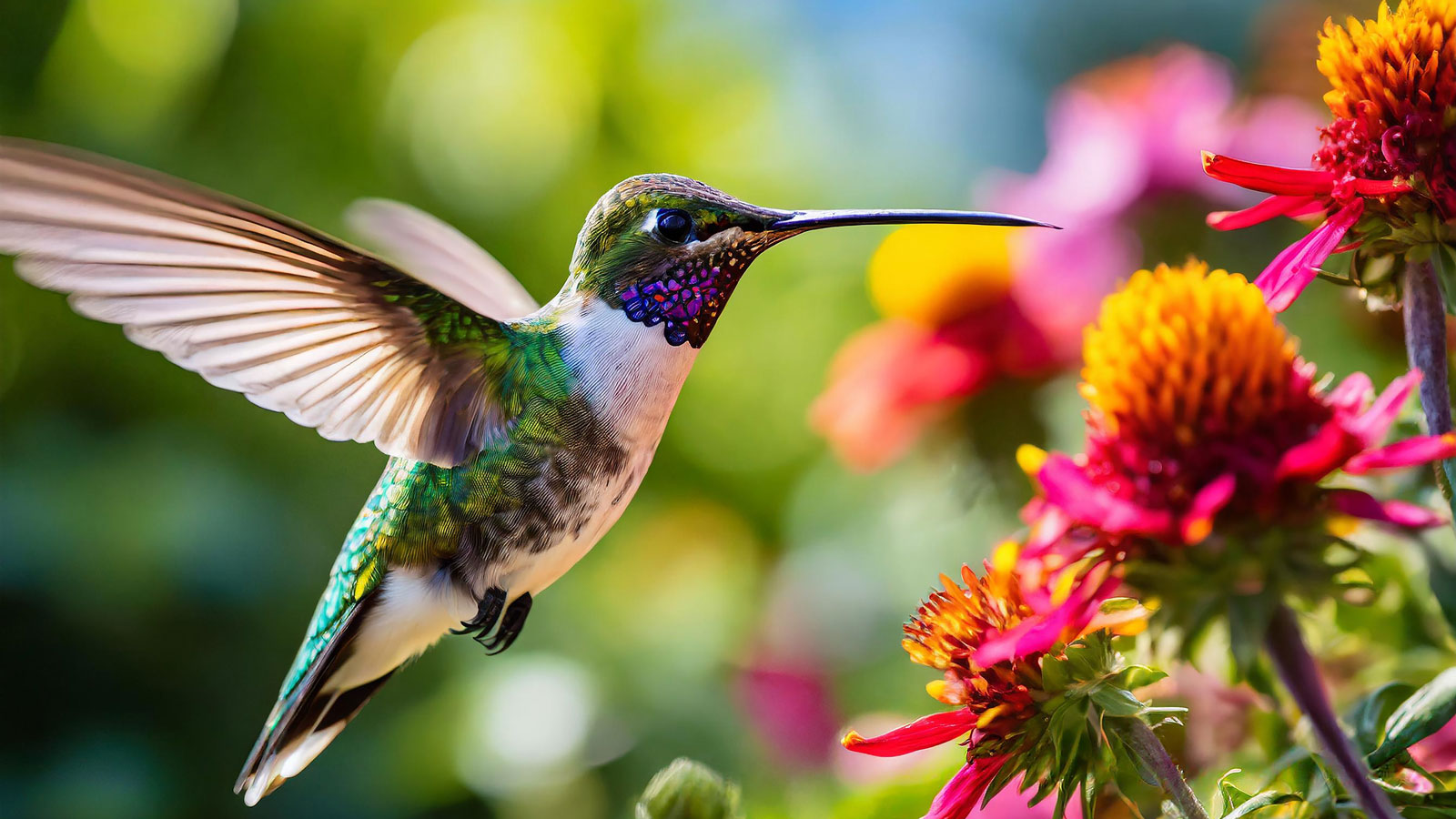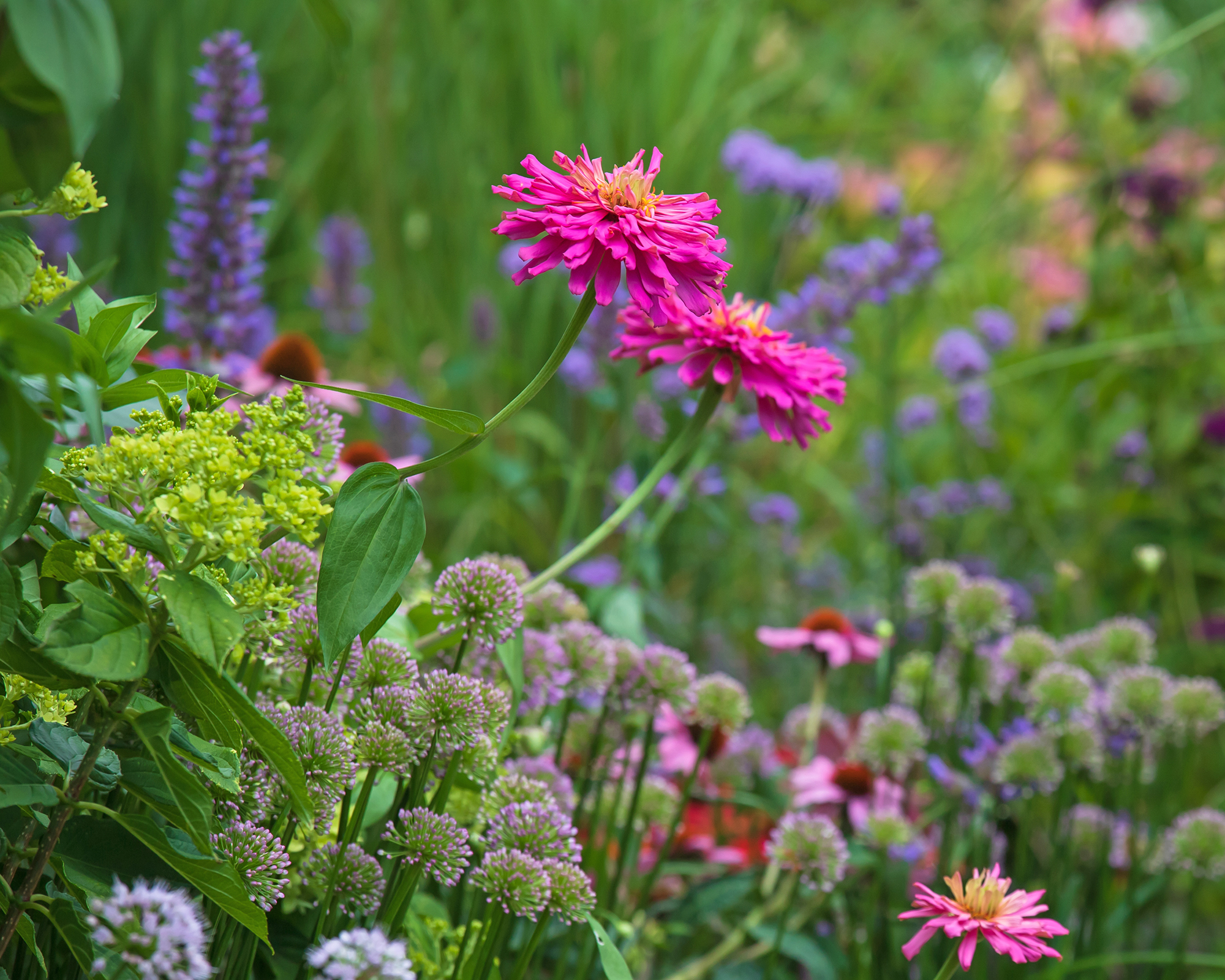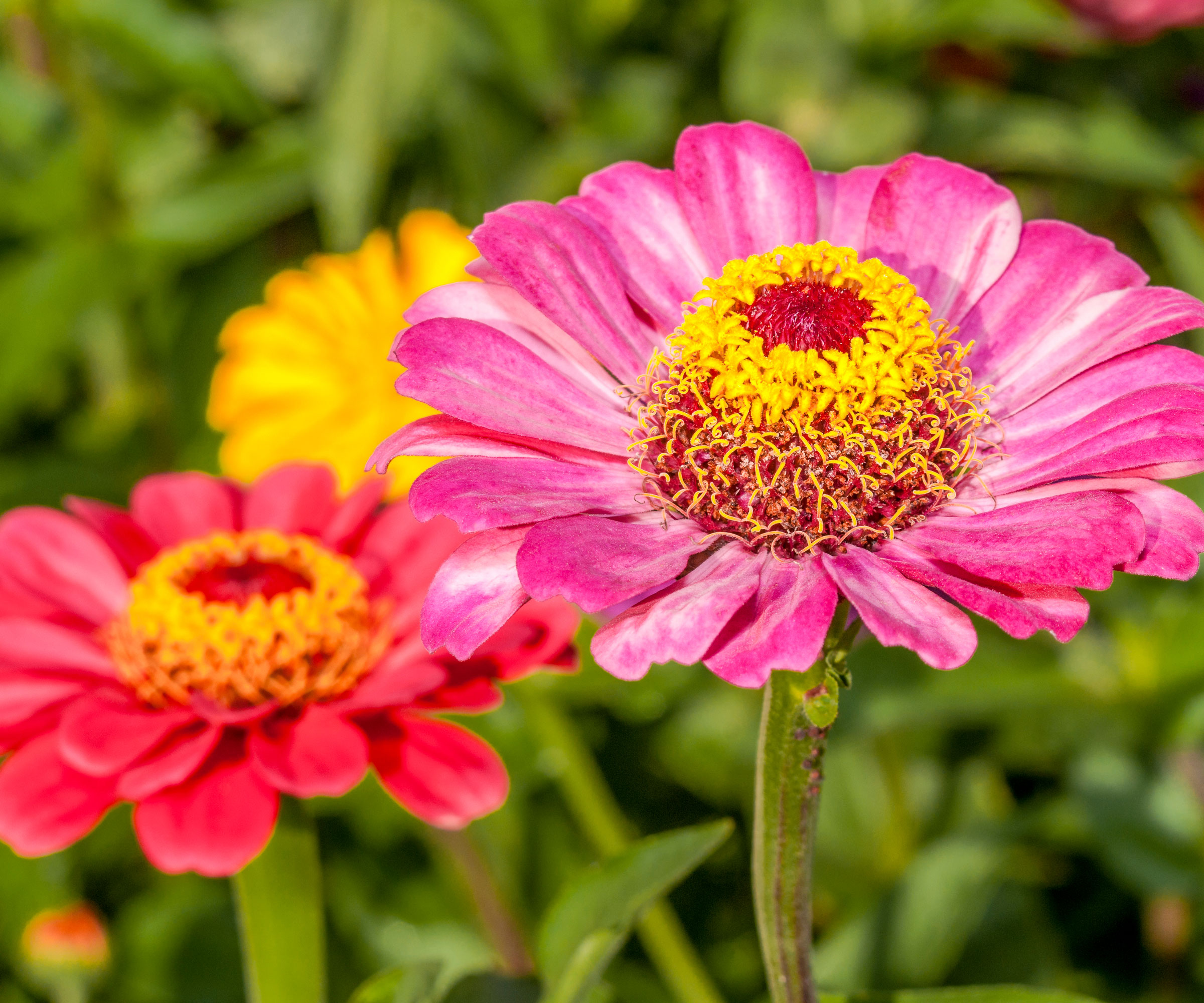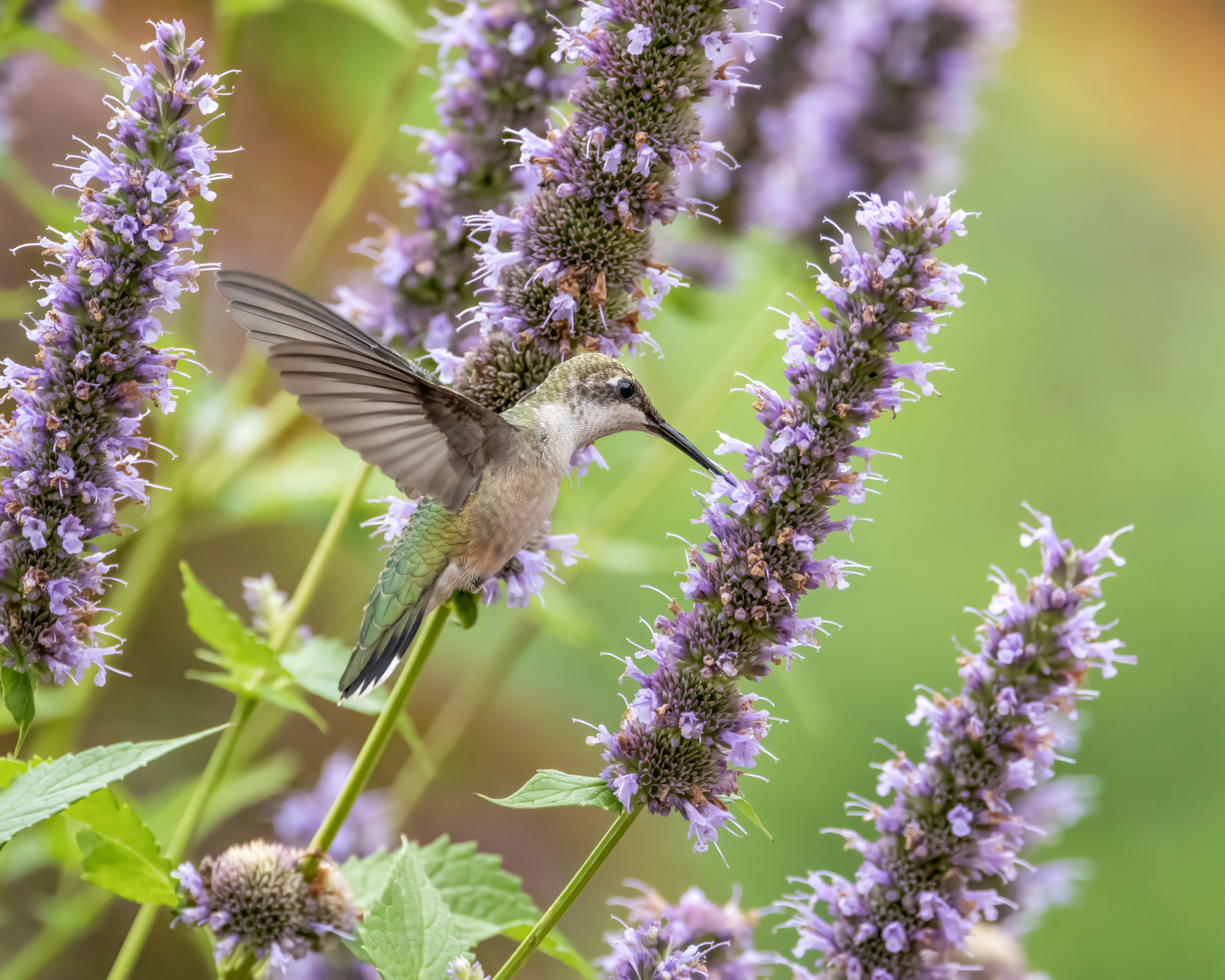Hummingbirds Flock to These Two Self-Seeding Flowers That Bloom From Summer Through Fall – They’re the Perfect Pair
Fill your garden beds and pots with these prolific bloomers that provide a feast for visiting hummingbirds – and for the senses.


Hummingbirds are some of the most welcome garden visitors, delighting us with their beauty and supporting plants as beneficial pollinators. Thoughtfully positioning hummingbird feeders is one way to encourage them to visit gardens. However, they are unlikely to stop by if there are no appealing plants to enjoy.
When choosing flowers and plants for hummingbirds, opt for a mix of annuals and native perennials. Plant pure species, rather than heavily hybridized flowers, which will produce less nectar. In addition, simple single flowers are best for pollinators, rather than more elaborate double flowers. Hummingbirds in particular are attracted to flowers with long, tubular shapes that allow their long beaks easy access to the nectar within. They are also drawn to bright red, orange, pink, and purple flowers, so consider this when making your choice.
Look for plant combinations that provide a succession of colorful plants spanning the seasons, and different light levels, including full sun hummingbird plants as well as shade plants. In addition to providing sustenance for wildlife, plant combinations should complement each other visually, with an attractive mix of colors and textures, as well as compatible sizes.

The Perfect Plant Pairing for Hummingbirds
Between late summer and early fall, hummingbirds begin to migrate south. So it’s vital to include plants in your garden that will support them at this time. Two of the best flowers for hummingbirds at this time are zinnias and agastache. Not only does this dynamic duo bloom at just the right time to provide much-needed nectar to migrating hummers, but they also look glorious together in garden beds and borders. Colorful zinnias provide a bold base, while agastache – also known as hummingbird mint – adds vertical contrast and fragrance.
Not only are these flowers a joy for both humans and wildlife, many varieties are also self-seeding. While there may be a small initial investment of planting zinnias and agastache, they will keep giving year after year. As long as you avoid deadheading at the end of the season, they will gently self-seed, providing beauty without becoming aggressive or invasive.
So, how do you grow these prolific flowers?
1. Zinnias

Zinnias come in every color and petal style imaginable, though you must stick to simpler flowers to bring in the hummingbirds. Choose bold colors and plant them en masse to provide an inviting landing pad. To add to their appeal, zinnias are some of the easiest flowers to grow from seed and are exceptionally fast – even an August sowing should result in a crop of delightful blooms before the first frost arrives.
Sign up for the Gardening Know How newsletter today and receive a free copy of our e-book "How to Grow Delicious Tomatoes".
Once established, zinnias are drought-tolerant, needing minimal maintenance. While flowers can be left on the plants at the end of the season to self-seed, you should deadhead early faded flowers to encourage repeat blooms.
Zinnias are perfect for pots and borders, and they make excellent cut flowers too, so you can create floral arrangements to bring the joy inside.
When planting zinnias for hummingbirds, choose the single varieties, such as Park Seed's Profusion zinnia mix, available at Amazon, which provide easy access to nectar and come in a vibrant mix of colors.
2. Agastache

Agastache, commonly known as hummingbird mint or hyssop, has vibrant, tubular flowers packed with nectar, which make it a magnet for hummingbirds. It blooms from midsummer into fall, providing a long-lasting food source that draws in not only hummingbirds but also bees and butterflies. Yet, it is deer-resistant.
With tall flower spikes in shades of purple, pink, orange, or blue, agastache adds vertical interest and a pop of color in borders or containers. Its aromatic foliage, which is reminiscent of mint or licorice, adds another appealing sensory layer to the garden.
This drought-tolerant perennial does best in full sun in well-drained soil. It needs minimal watering and just occasional deadheading to encourage extended blooming.
For a classic look, try Blue Giant agastache, available from Walmart. Or, for a bolder pop of color, plant Proven Winners' Pink 'Maestro Coral' variety.
Do I Still Need to Use Feeders?
As well as planting for hummingbirds, it's also a good idea to add hummingbird feeders to your garden, which you fill with sugar water. Opt for a bee and ant-proof design, such as these Bolite glass hummingbird feeders from Amazon.
Alternatively, the Birdfy Hummingbird Feeder with Camera, available on Amazon, allows you to nurture the birds while enjoying HD footage and real-time notifications when they visit. It's the best way to get up close and personal with your marvellous mini guests.
When used in combination, specially designed feeders and enticing plants will turn your garden into a hummingbird oasis.
More Great Hummingbird Plant Pairings
- Nasturtium and cuphea make a good pairing. The bold, edible nasturtiums contrast beautifully with quirky cuphea blooms, and both are loved by hummingbirds.
- Cosmos and verbena grow well together and create a dreamy, meadow-style planting design with vertical interest and plenty of color.
- Bee balm and larkspur are cottage garden favorites. Fiery bee balm contrasts with larkspur’s cool hues and vertical lines, and both are magnets for hummingbirds and other pollinators.

Melanie is an experienced gardener and has worked in homes and gardens media for over 20 years. She previously served as Editor on Period Living magazine, and worked for Homes & Gardens, Gardening Etc, Real Homes, and Homebuilding & Renovating. Melanie has spent the last few years transforming her own garden, which is constantly evolving as a work in progress. She is also a passionate organic home grower, having experimented with almost every type of vegetable at some point. In her home, Melanie tends to an extensive houseplant collection and is particularly fond of orchids.